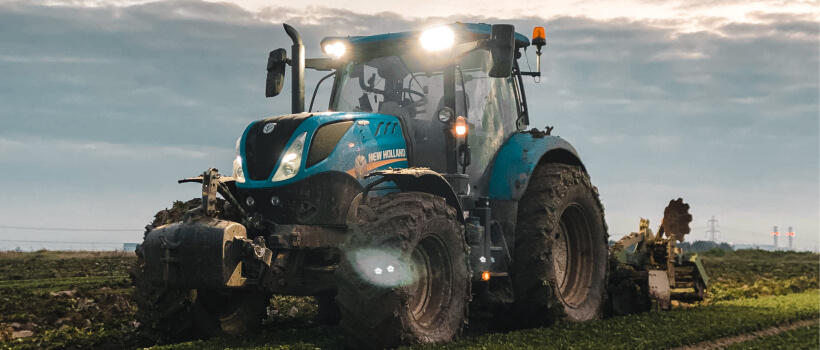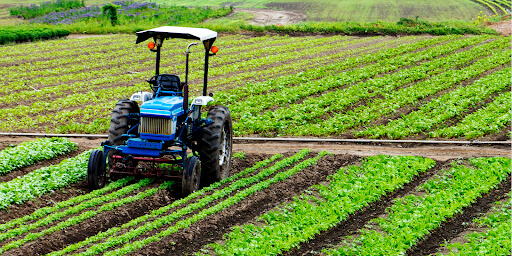 1-800-805-5783
1-800-805-5783 
Mechanized farming has revolutionized the agricultural industry, bringing numerous benefits and advancements to farmers worldwide. This article will explore the importance of mechanization in agriculture, its historical context, and its advantages. We will explore how improved techniques, commercialization, nullification of labor shortages, increased crop production, and higher farm income are all outcomes of mechanized farming. So, let’s dive in and discover everything you need about mechanized agriculture.
Mechanization is crucial in agricultural crop production, especially in developing countries. It addresses the challenges posed by limited farm power availability, historically a source of poverty in regions like sub-Saharan Africa. By increasing the power supply to agriculture, mechanization allows for the timely completion of tasks, cultivation of larger areas, and higher crop yields, all while conserving natural resources. Moreover, using environmentally friendly technologies enables farmers to produce crops more efficiently with reduced power consumption.
Sustainable agricultural mechanization also contributes significantly to developing value chains and food systems. It enhances post-harvest, processing, and marketing activities, making them more efficient, effective, and environmentally friendly. By adopting mechanization practices that align with the needs of farmers, including women who contribute significantly to farming communities, the labor burden can be reduced, thereby improving their livelihoods.
Throughout the 20th century, mechanization has transformed the agricultural industry globally. In India, for instance, the Innovations in Technology Dissemination (ITD) component of the World Bank-funded National Agricultural Technology Project (NATP) was introduced in the late 1990s as a pilot initiative. This project aimed at testing new institutional arrangements and bottom-up planning procedures to enhance technology dissemination and make it more farmer-driven and accountable. The pilot program’s success led to the introduction of the Agricultural Technology Management Agency (ATMA) scheme in 2005-06, which provided greater autonomy at the district level to coordinate extension activities and promote integrated extension service delivery.
Over time, the ATMA scheme has undergone revisions to further its objectives. These include providing innovative and autonomous institutions, encouraging multi-agency extension strategies, ensuring an integrated extension delivery mechanism, adopting a group approach to agricultural extension, facilitating program convergence, addressing gender concerns, and promoting sustainability through beneficiary contribution.
Mechanization has brought about significant improvements in agricultural techniques. Land reclamation has become more efficient, reduced soil erosion, and optimized irrigation systems. Cultivators attached to tractors help smooth out the soil, fill in ditches, and remove weeds, thereby increasing the amount of usable land and preventing soil erosion. Additionally, mechanized irrigation systems enable targeted watering of plant roots, reducing water wastage and improving overall efficiency.

The advent of mechanization has shifted from subsistence farming to commercial agriculture. The increased productivity and crop yields offered by mechanization have made it possible to produce more food on a larger scale, allowing domestic consumption and export. Commercial agriculture brings economic benefits to farmers and contributes to overall food security.
Labor shortages in rural areas, caused by migration to urban centers, have become less problematic due to agricultural mechanization. Machines can now perform various tasks that previously required manual labor. This not only addresses the labor shortage but also reduces the amount of time and effort needed to make farms operational.
Mechanization has paved the way for increased crop production by making challenging land arable and improving land utilization. Rugged terrains that were once considered unusable can now be cultivated with the help of machines. This expansion of usable land, combined with the efficiency of mechanized farming practices, allows for growing a wider variety of crops and significantly higher yields.
One of the most significant advantages of mechanized farming is the potential to increase farm income. Mechanization saves time and reduces the need for extended periods of paid labor. Additionally, the higher crop yields achieved through mechanized practices increase income. This, in turn, allows farms to operate on a larger scale, reaching global markets and expanding their profitability.
Mechanized farming has revolutionized the agricultural industry, bringing numerous advantages and advancements. Improved techniques, commercialization, nullification of labor shortages, increased crop production, and higher farm income are just a few of the benefits that mechanization offers. As we move forward into the 21st century, the role of mechanized farming will continue to evolve, driving further innovations and improvements in the agriculture sector. Embracing sustainable mechanization practices will be crucial for achieving food security, reducing poverty, and improving farmers’ livelihoods worldwide.